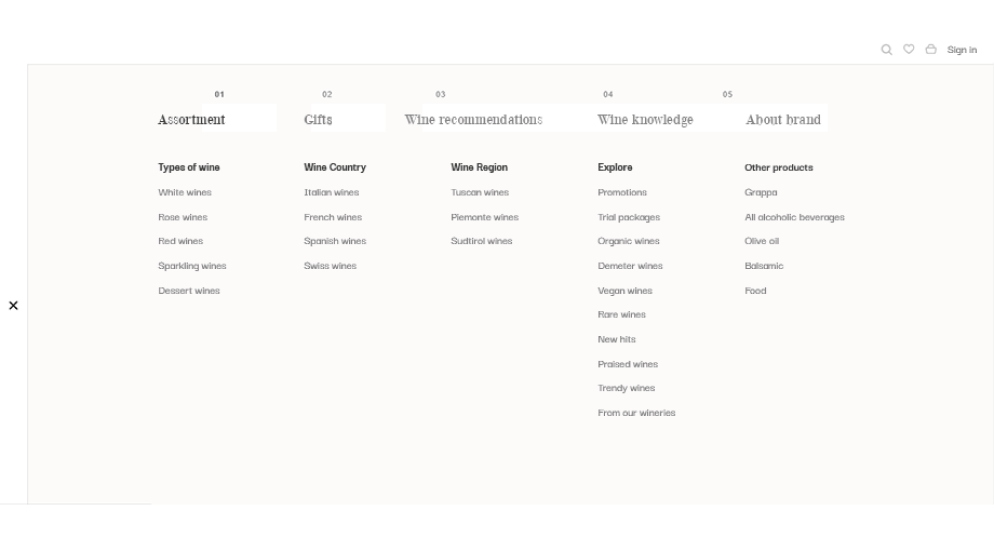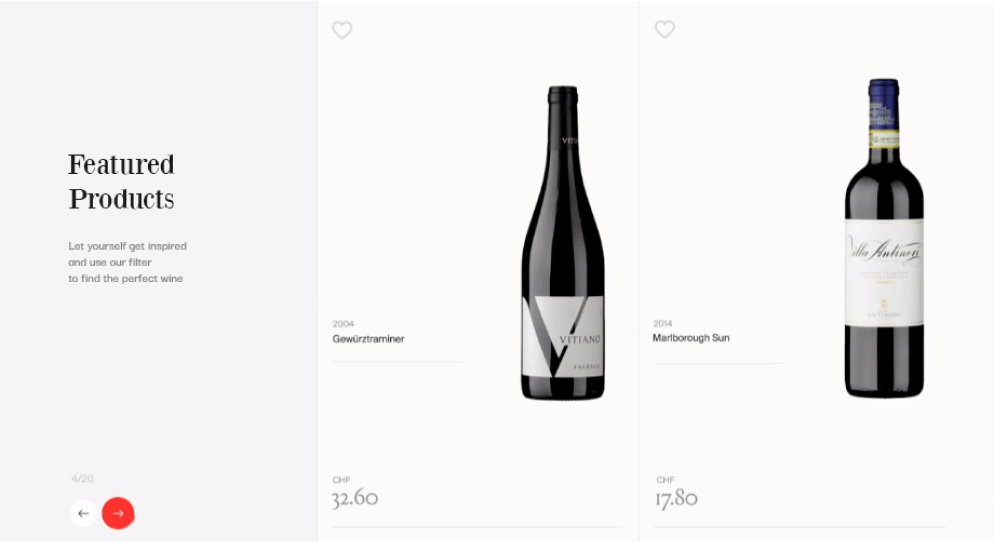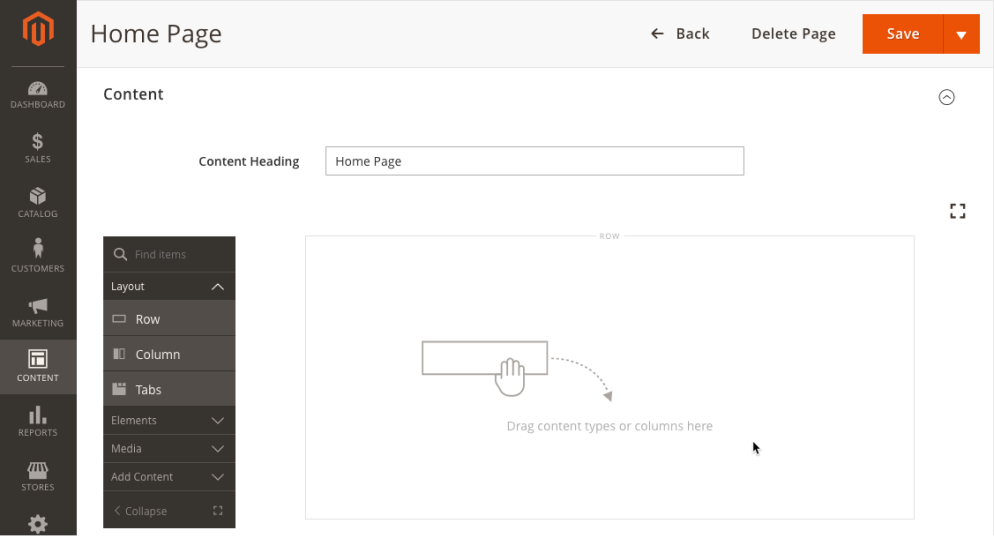Magento 2 Case Study
Getting the Most Out of Magento Powers for a Wine Store
-
1909
date
of establishment
-
40
perfect
restaurants
-
7K+
FB
followers
Challenges
The client came to us with a goal to develop a conversion-friendly and up-to-date web design on Magento Commerce Cloud 2.3.1 and implement a range of customizations and integrations to upgrade the store and improve the user experience.
Want to work with us?
Leave your contact details and we’ll get back to you as soon as possible
Team
- DevOps Engineer
- Project Manager
- 3 Front-End Developers
- 2 QA Engineer
- 4 Back-End Developers
Services provided
Solutions
Discovery Stage
Working on the project begins with going for a business trip to meet face to face with the client’s stakeholders and perform a range of in-depth interviews to delve into their business specifics, explore the existing architecture and internal processes from the inside.
The project involves our close collaboration with a partner (WeAreAgent), a digital agency that initially recommended us to the client and contributes heavily to further development and implementing features with SEO specialists, designers, and engineers.
Our teamwork with their SEO experts results in building a sitemap for the website and outlining a high-level features list, which allow us to set up the initial estimate and help the client see the basic project scope.
Planning Stage
A range of artifacts and practices from the previous steps allowed developing the project specification document with a list of all web pages with features, logic and architecture requirements, prototypes to fulfill the vision of the project. We presented the results to the client to outline the full project scope and deadlines to receive their feedback.
Design Stage
The final website design turned out to be catching and engaging, full of complex interactions and visual effects that generate a lasting impression.
Project specification document
is a comprehensive description of objectives for a development project. It contains all the goals, functionality, and details required for a development team to fulfill the vision of the client.
Development & Features
The client was in the middle of migrating the project from Prestashop to Magento 2.3 Commerce Edition. At some
A list of specific design features resulted in several challenging parts, which caused quite significant customizations of the Magento layouts.
Custom filters. One of the uncommon implementations was adding specific product filters on the homepage and adjusting their Frontend logic to the designs to make them work seamlessly:
Users can select filtering parameters, click the Search button, and get redirected to a search results page with the filters opted on the homepage.
Layered navigation & parallax scrolling effect. We also developed layered navigation to make it easy to find products based on any attribute:
Parallax scrolling effects were also implemented to create a pleasant shopping experience.
Integration with the ERP system. A further extensive part of the project development was a two-way API integration with Microsoft Dynamics.
The website exchanges information with it by using DreamFactory, an effective intermediary in such chains. The system receives product information from the ERP system, while it transfers customer data to it. When an order is created on the Magento side, it’s also automatically delivered to Microsoft Dynamics.
Custom prices, discounts & taxes. The ERP system allows managing prices, discounts & taxes, so we framed a well-managed implementation to fully customize the Magento logic to tailor it to the client’s business needs.
Prices, discounts & taxes are displayed for various groups of customers and even individual users in different ways depending on the scenarios dictated by the client’s business. For instance, a particular group of customers sees discounted prices, while another views non-discounted.
Besides product pages, users can also see personalized prices in carousels right in product grids on the homepage:
ERP (Enterprise resource planning) system
is business management software that allows managing and automating back-office functions related to technology, services, and human resources.
Microsoft Dynamics
is an ERP system designed to manage key processes within the company. It allows getting a more detailed overview of what is happening in the company, automates processes related to finances, sales and marketing, production, warehousing, and supply
DreamFactory
is a technology that enables developers to build modern applications without having to manage server side-code and complexity. It can be installed on any server, connected to any SQL or NoSQL database, and used for developing HTML5 or native mobile applications.
In the shopping cart and checkout pages, custom totals are displayed and divided into categories — customers can see their personal discounts and taxes separately.
Users also have a ‘take away’ option, and if a customer takes away ordered items from the offline store, the system includes and displays an additional discount in totals.
Page Builder website development. One of the major features was the client’s request to deliver the website in Page Builder in its intuitive drag-and-drop interface:
Creating a website in Page Builder takes more time for a development team and costs more as well, but it significantly reduces the client’s costs in the long run. The client doesn’t need to spend extra on the developer’s work in perspective, as the skills of content managers are enough to change the content quickly and easily by using Page Builder.
Creditworthiness check. The online store provides customers with a ‘pay by invoice’ option, which is related to potential financial risks for the client as customers sometimes don’t pay offline for their purchases. For minimizing these risks, we integrated an online store with the third-party service Bisnode that checks the creditworthiness history of a customer who is trying to purchase by invoice. If a user is creditworthy according to the system for more than 75%, a client has an option ‘pay by invoice’ active. Otherwise, it’s not available.
Changing the invoices flow. According to the client’s operations, we adapted the invoices flow to make it easier for both internal business processes and customers. As soon as an order is placed on the website, it’s automatically sent to the ERP system. An invoice is generated not on the Magento side as it’s done by default, but on the side of Microsoft Dynamics. Once it’s done, it’s sent in PDF format and attaches to the order in the personal customer account.
SEO customizations. For better website optimization and more organic traffic attraction, we worked with the SEO specialist on delivering deeply customized headings and titles that can’t be covered by out-of-the-box Magento functionality.
Our teamwork also resulted in building a tailor-made sitemap, which contains more than 80,000 links, including custom ones with direct links to filters.
Page Builder
is a Magento extension for creating content by using a drag-and-drop interface and pre-built content types.
Bisnode
is a solution that gives the decisive information, updated on a daily basis, on the payment capacities of the customers in Germany, Austria, and Switzerland.
Result
We delivered the project from start to finish within 3 months, developed the website in Page Builder from scratch to save resources and reduce the client’s costs in the long run, and executed an API integration with Microsoft Dynamics and the custom-built prices, discounts & taxes logic.




